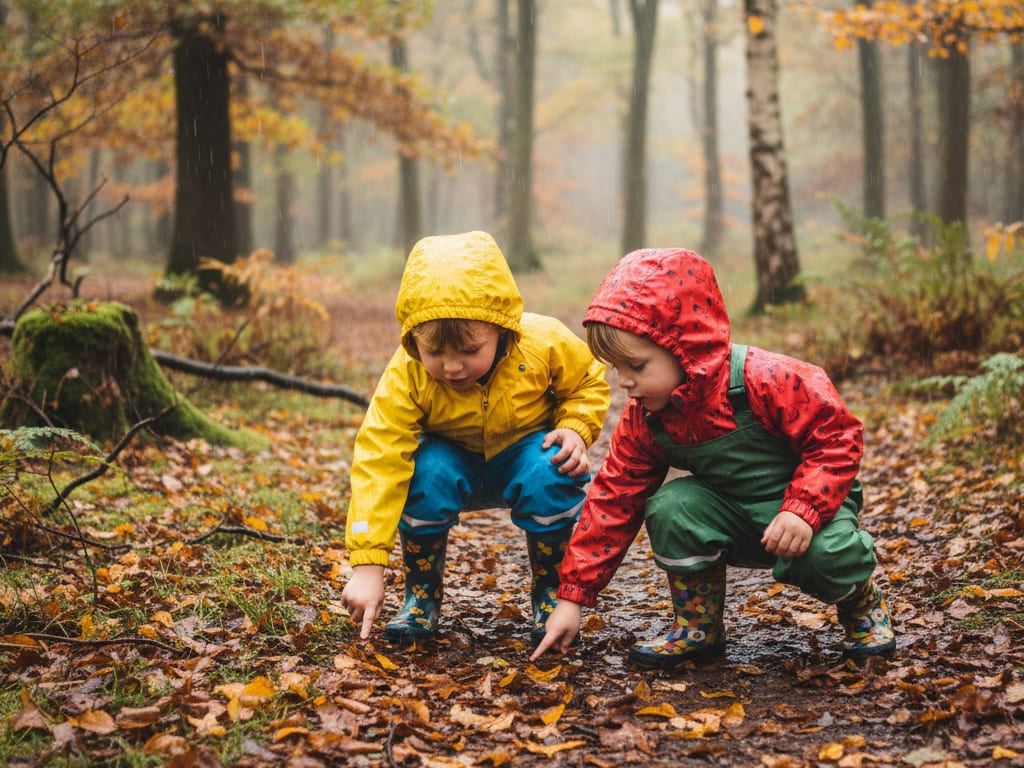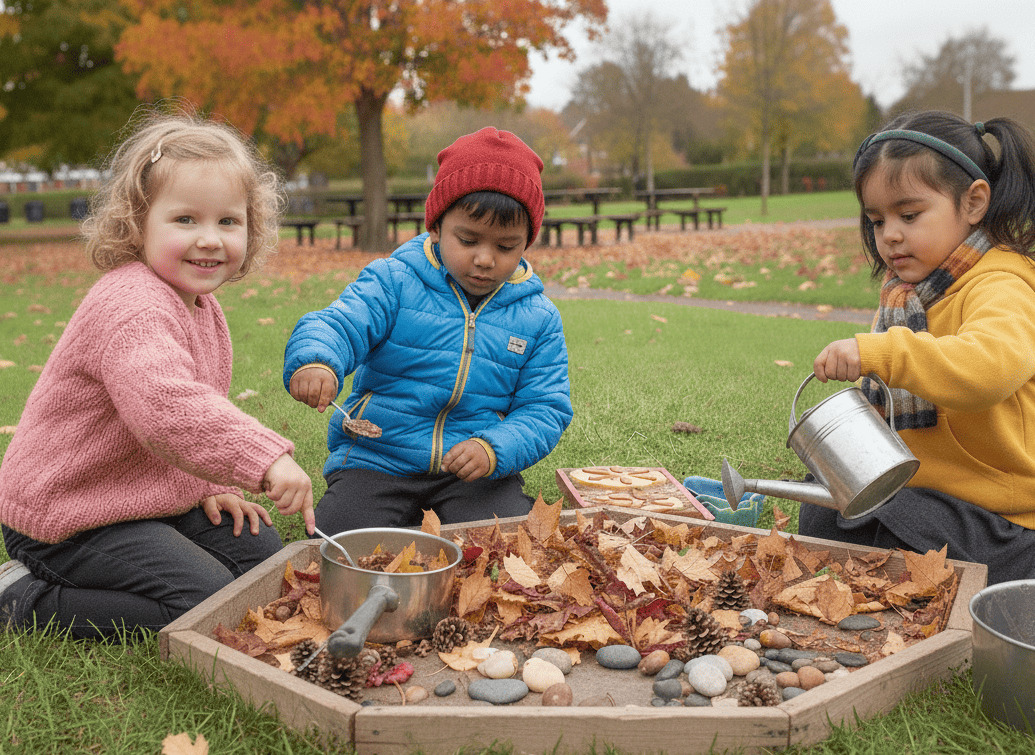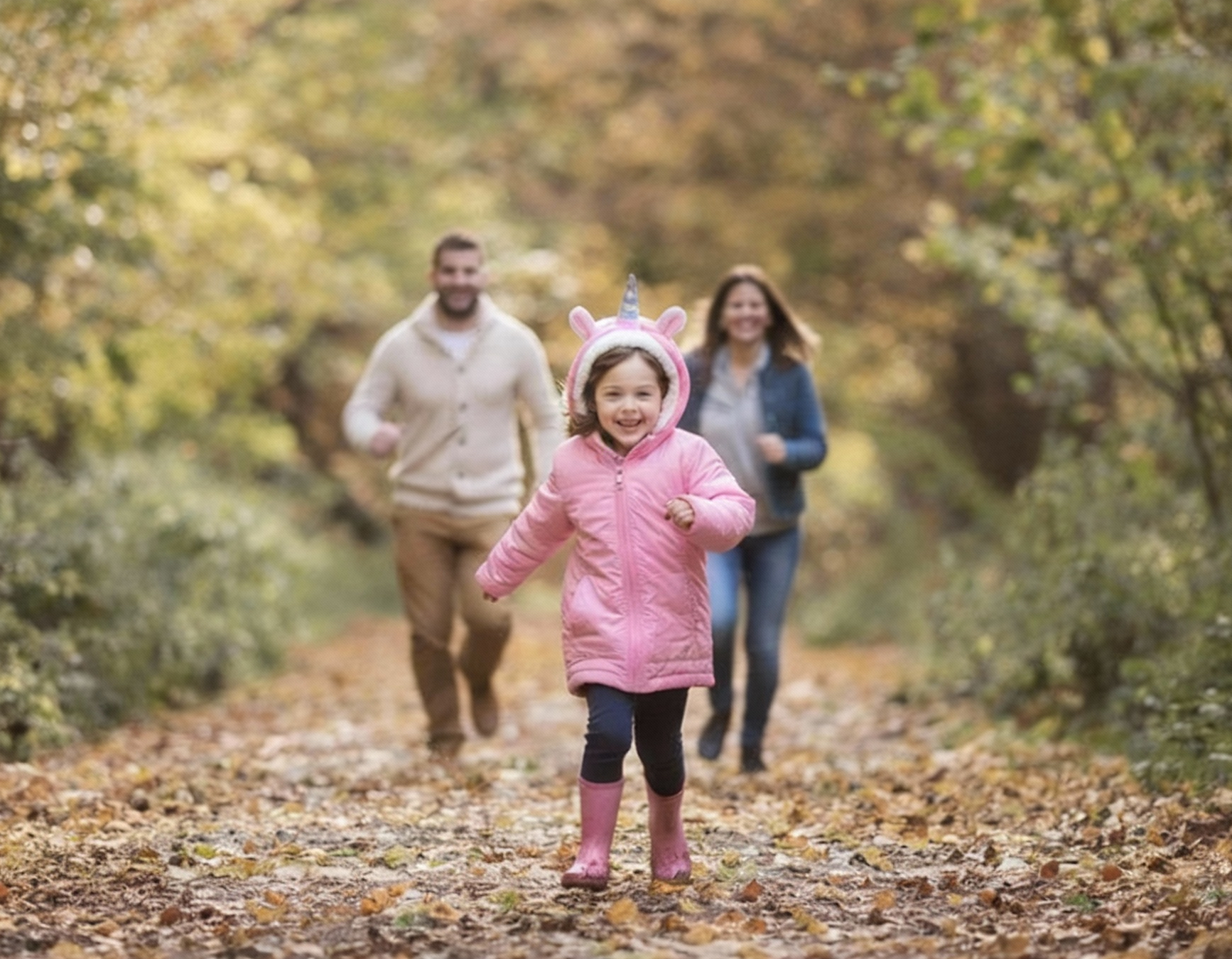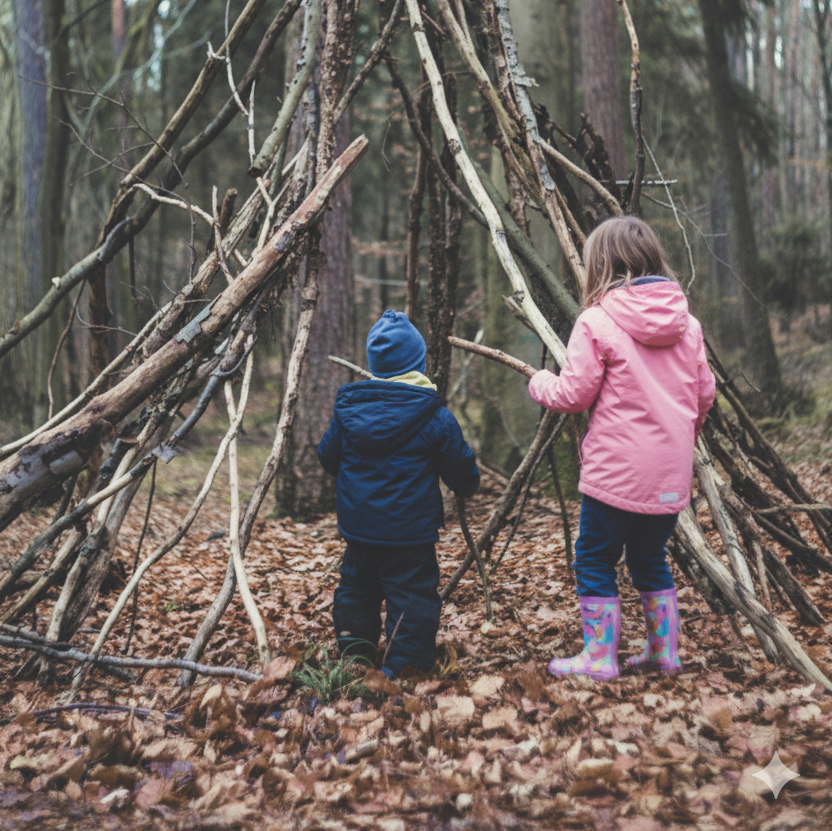· Education · 7 min read
Outdoor Activities for Under 6s in Autumn: A Practical Guide for Parents
Discover 10 engaging autumn outdoor activities designed specifically for under 6s. From sensory leaf hunts to mud kitchen cooking, these research-backed activities boost development while building lasting nature connections.
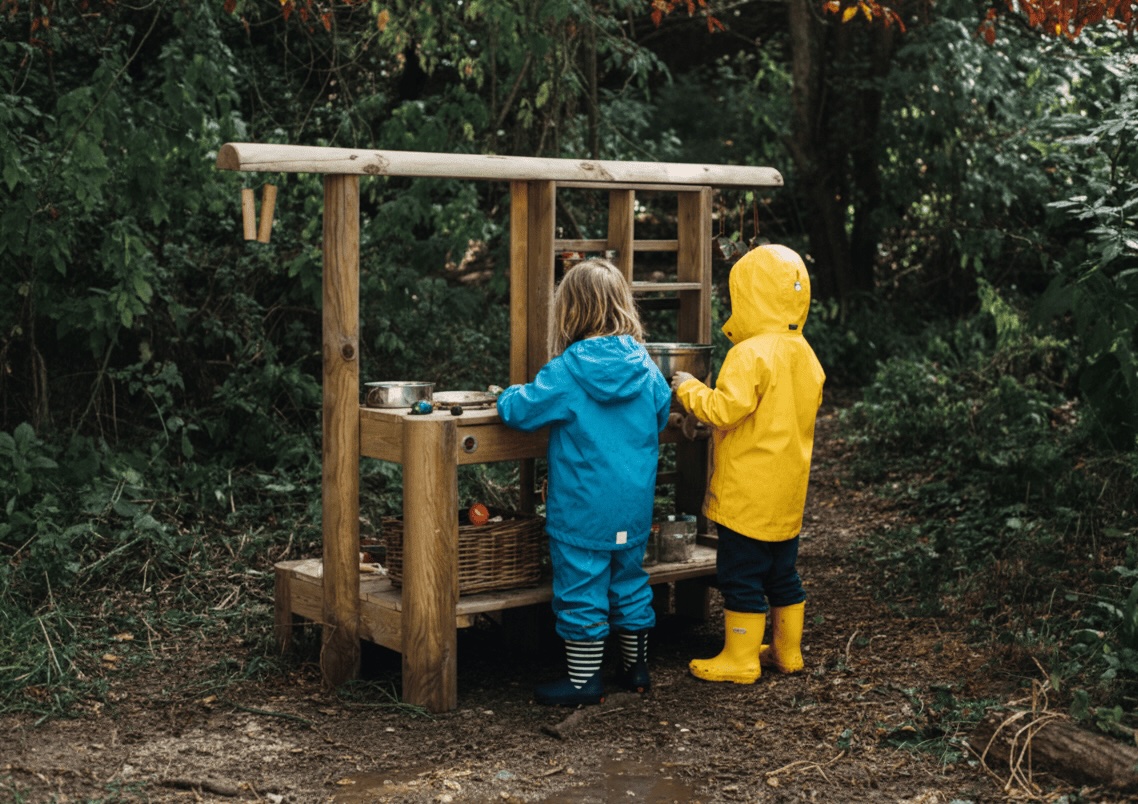
Autumn creates ideal conditions for outdoor learning with under 6s. The weather remains manageable while nature provides constantly changing sensory experiences that capture young attention spans.
Recent research from the International Journal of Behavioral Nutrition and Physical Activity confirms that access to nature positively influences children’s personal and social growth, with benefits including improved physical health, mental health and wellbeing, and creativity. The seasonal changes in autumn provide rich learning opportunities about transformation and adaptation.
The moderate temperatures and shorter days create natural boundaries for outdoor time that work well with young children’s energy levels and attention spans.
10 Autumn Activities Perfect for Under 6s
Young children need activities that engage their senses without requiring complex instructions. These autumn activities are designed specifically for the developmental stage of 2-6 year olds.
Sensory Exploration Activities
Leaf Texture Collection Give your child a small basket and encourage them to gather leaves with different textures. Smooth sycamore leaves, rough oak leaves, and papery birch leaves each provide distinct sensory input.
Let them sort leaves by feel rather than type. This develops fine motor skills, introduces basic classification, and allows children to learn at their own pace through touch and exploration.
Autumn Scavenger Hunt Create a simple visual list with pictures of common autumn items: acorns, pinecones, yellow leaves, smooth stones. Young children can match what they find to the pictures.
This activity builds observation skills and gives children a sense of purpose during walks. Keep the list short and use clear, simple images that are easy for young children to identify.
Conker Rolling Collect conkers and set up gentle slopes using planks or natural hillsides. Let children roll the conkers and chase after them. This simple activity provides entertainment while developing gross motor skills.
Creative and Artistic Activities
Natural Art Arrangements Provide children with collected leaves, twigs, stones, and acorns. Let them arrange these materials on the ground in patterns or pictures of their choosing.
This open-ended activity supports creativity and spatial awareness.
Mud Kitchen Cooking Set up a simple outdoor kitchen using old pots, wooden spoons, and containers. Children can create “meals” using mud, water, leaves, and other natural ingredients.
Mud play supports sensory development and imaginative play. It also introduces early chemistry concepts as children experiment with mixing different materials and textures.
Bark Rubbing Art Place paper against tree bark and rub with crayons to capture the texture patterns. Different trees create completely different designs.
This activity develops hand strength needed for later writing skills while teaching children about tree identification and natural patterns.
Physical Development Activities
Puddle Jumping After autumn rain, puddle jumping provides excellent gross motor exercise. Children learn to judge distances and develop balance and coordination.
Always check puddle depth first and ensure children wear appropriate waterproof boots. The joy and physical challenge of jumping builds confidence and body awareness.
Log Balancing Use fallen logs or raised tree roots to create simple balance challenges. Stay close to provide support but allow children to attempt crossings independently.
Balance activities are crucial for physical development in under 6s. They build core strength, improve coordination, and provide manageable challenges that boost self-confidence. Research published in PMC shows significant improvements in motor skills when children aged 4-6 years engage in goal-oriented outdoor play activities.
Leaf Pile Adventures Create safe leaf piles for jumping and hiding. This classic autumn activity provides sensory input, physical exercise, and pure joy.
Check piles for hidden objects before use. The unpredictable nature of leaf piles provides proprioceptive input that helps children understand their body position and movement.
Problem-Solving Activities
Sorting Challenges Provide collection containers and ask children to sort natural materials by different criteria: rough/smooth, big/small, heavy/light. Let them decide the sorting rules after they’ve collected items.
This develops classification skills and logical thinking. Children create their own problems to solve rather than following adult instructions. They can change the sorting criteria as they discover new patterns in their collections.
Note: Younger children (ages 2-3) typically manage simple sorting like big/little or light/dark colours, while older children (ages 4-6) can handle more complex criteria involving texture, weight, or multiple characteristics.
Essential Safety Considerations for Autumn Activities
Proper preparation ensures safe and enjoyable outdoor experiences. Autumn weather can change quickly, so flexibility in clothing and timing is important.
Long sleeves and trousers protect against scratches, thorns, and insect bites. Waterproof boots with good grip prevent slips on wet leaves and muddy ground. Layer clothing so children can stay comfortable as temperatures change throughout the day.
For detailed guidance tailored to autumn weather and your child’s specific needs, use our interactive clothing advisor tool. It provides recommendations based on current weather conditions and planned activities.
Check natural play materials before use. Remove any mushrooms, berries, or plants that could be harmful if touched or accidentally eaten. Inspect fallen logs for stability before allowing children to climb or balance on them.
Carry a basic first aid kit and ensure children understand simple safety rules: stay within sight, don’t put natural materials in mouths, and ask before touching unknown plants or insects.
Age-Specific Adaptations for Different Developmental Stages
Ages 2-3: Sensory Focus Very young children benefit most from simple sensory experiences. Focus on texture exploration, basic collecting activities, and supervised water or mud play.
Keep activities short (15-20 minutes) and have realistic expectations. Success at this age means engagement and enjoyment rather than completing specific tasks.
Ages 3-4: Independence Building Children this age can handle slightly more complex activities like simple tool use (child-safe magnifying glasses), basic den building assistance, and following two-step instructions.
Encourage independence while providing necessary support. Let them make choices about which activities to try and how long to spend on each one.
Ages 4-6: Skill Development and Leadership Older children can engage in more structured activities like organized scavenger hunts, collaborative building projects, and basic risk assessment discussions. Six-year-olds often enjoy teaching skills to younger children.
This age group can handle more complex tools, multi-step activities, and benefit from opportunities to explain their discoveries to others, which reinforces their own learning.
Building Long-Term Benefits Through Regular Autumn Activities
Consistent outdoor experiences during autumn create lasting developmental benefits that extend well beyond the season. Children who regularly engage with nature show improved emotional regulation, better problem-solving skills, and increased physical confidence. A 2021 study published in Early Childhood Education Journal found that outdoor play prior to learning resulted in greater on-task behaviour for preschoolers, particularly benefiting boys and children from low socioeconomic backgrounds.
Research demonstrates that children who spend regular time outdoors develop stronger immune systems and better sleep patterns. According to the National Association for the Education of Young Children, these benefits often persist even when outdoor time decreases during winter months.
The seasonal changes in autumn provide natural learning opportunities about cycles, adaptation, and impermanence. Young children learn that change is natural and manageable, skills that serve them throughout life.
Making Autumn Activities Work for Your Family
Start with activities that match your child’s current interests and energy levels. A child fascinated by vehicles might enjoy collecting items for “delivery” games, while those interested in animals might prefer activities focused on finding signs of wildlife preparation for winter.
Choose times that work with your family’s routine rather than adding stress to busy schedules. Even 15 minutes of focused outdoor activity provides developmental benefits for young children.
Keep supplies simple and portable. A small collecting bag, magnifying glass, and wet wipes handle most autumn activities. Remember that children’s imagination often creates more engagement than elaborate equipment.
Document your adventures with photos or simple drawings. Young children love revisiting their discoveries and sharing experiences with family members. This reinforces positive associations with outdoor time.
Consider weather as an opportunity rather than an obstacle. Light rain creates different sensory experiences and new learning opportunities. Gentle wind makes leaves dance and provides cause-and-effect demonstrations.
